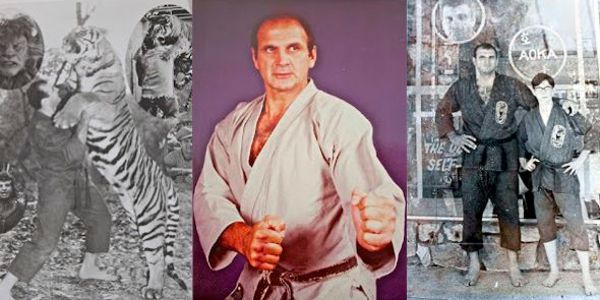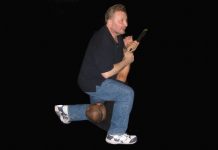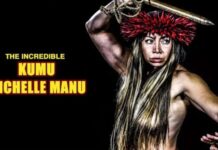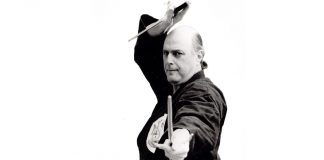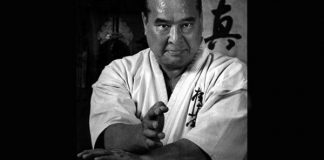I am particularly proud to contribute this column, which focuses on Bob Ozman my first karate instructor. I began lessons with Bob Ozman as a 10th birthday gift from my parents. Bob Ozman, doesn’t like to be called by the title master, but has certainly earned whatever respect in the arts we can grant him. As we all know, the initial impression that we make is often the longest lasting. Bob Ozman must have made a great impression on me, since I have been studying and practicing martial arts ever since I met him, almost without interruption.
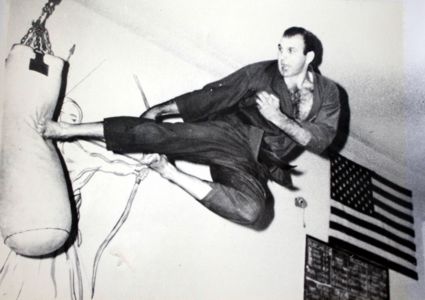
Although I did move from Isshin Ryu, to study other styles of martial arts, Bob Ozman (and one of his head instructors, Johnny Atkinson) have always been held in my highest regard. I’m sure I model my behavior, including my teaching technique, in part on what I learned from them and all my other martial arts instructors I’ve had over the decades.
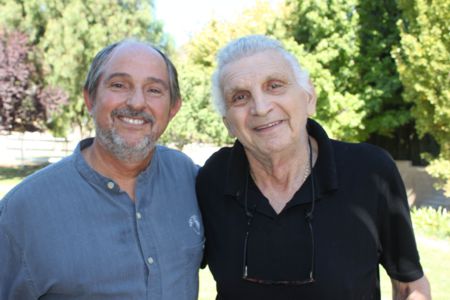
During that time, I have written articles with and about both Bob Ozman and Johnny Atkinson. There is an article on Tatsuo Shimabuku (the creator of Isshin-ryu), an interview with Bob Ozman’s about his most famous movie role (Bullman in the Island of Dr. Moreau) and another article about Johnny Atkinson (I referred to this article in the interview with Benny the Jet Urquidez). I’ve also worked
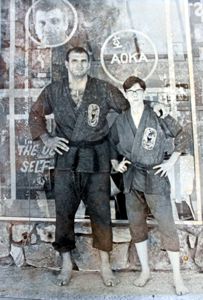 with Bob Ozman in other capacities as he directed a short film I wrote, a public service video called, Halloween Awareness. Both Bob Ozman and Johnny Atkinson even appears as characters in my upcoming novel, The Panda Chronicles, a story that is based upon the real life undercover drug detective, Rico Rose. Rico was also a student of Bob Ozman’s and the reason that Rico and I became friends. The important point here is that, even though I have studied and achieved rank in other styles, I’ve never stopped seeing myself as Bob Ozman’s student and I’ve always kept him a part of my life, in whatever way I can. This, I’d have to say, is a manifestation of my beliefs, and directly emphasizes how strong a bond there is between the past and the future. This article, and the three others that follow, demonstrate the fundamental objective of Legends and Legacies. With this series of articles we see how Shimabuku was influenced, how he influenced others, how his students were influenced and how, they influenced others and how you, as readers of this column become part of the flow of martial arts information.
with Bob Ozman in other capacities as he directed a short film I wrote, a public service video called, Halloween Awareness. Both Bob Ozman and Johnny Atkinson even appears as characters in my upcoming novel, The Panda Chronicles, a story that is based upon the real life undercover drug detective, Rico Rose. Rico was also a student of Bob Ozman’s and the reason that Rico and I became friends. The important point here is that, even though I have studied and achieved rank in other styles, I’ve never stopped seeing myself as Bob Ozman’s student and I’ve always kept him a part of my life, in whatever way I can. This, I’d have to say, is a manifestation of my beliefs, and directly emphasizes how strong a bond there is between the past and the future. This article, and the three others that follow, demonstrate the fundamental objective of Legends and Legacies. With this series of articles we see how Shimabuku was influenced, how he influenced others, how his students were influenced and how, they influenced others and how you, as readers of this column become part of the flow of martial arts information.
(Ozman) So what is the name of that website where this interview will appear?
(G) USAdojo.com
(Ozman) O.k. I’ve got it now.
(G) Dana Stamos is the publisher. She’s doing some really great things with her site, basically because she really loves martial arts.
(Ozman) That’s a good reason, isn’t it?
(G) Well, I think so. She explains that she created her original martial arts web site for her own sake. As a result of an accident, she has difficulty learning and remembering what she learns, so she would save the information on the web site. The site simply grew as she learned, until it was the largest and most visited martial arts web site and from there she went on developed her other sites, like this one. The same thing happened to me. I had a concussion in an auto accident and forgot really basic information.
(Ozman) Auto accidents are rough. One of my top guys just had an auto accident and almost died.
(G) Which one?
(Ozman) Ken Firestone. He collided, head on with another car. He was in a much smaller car and had his engine pushed up and crushed his legs. He was in pretty bad shape. He is just now getting up on crutches. The accident was close to a year ago.
(G) With me, tai chi and massage was what saved me. Let’s get back to you, though. You know, my brother was with me when I first walked by your studio on Van Nuys Blvd. I was about 10 years old and I said, “Wow, I’d really like to take karate lessons. He said, “Your birthday’s coming up. Why don’t you ask Mom and Dad if they’ll get you lessons for your birthday?”
(Ozman) Do you still have family with you?
(G) Yes, all of my siblings and both parents are still alive. What about you?
(Ozman) My mother is 93 and living in Michigan. We were from Indianapolis originally, but as she got older, my sister had already moved to Michigan so my mother went up there. She got herself a condo and she’s still shifting, moving around. She complains that she can’t cook so much anymore, but other than that it’s really nice that you still have both of your parents. I lost my father some time ago. Damn near 15 years ago. We were very close. We spent a lot of years together.
(G) What happened to him?
(Ozman) He had diabetes, same as yours truly, here. Then, he had a stroke and I think the stroke actually did him in. With the diabetes, it was pretty bad stuff.
(G) What do you do for your diabetes?
(Ozman) Well, I take my insulin, my medications and I take a lot of vitamins and I try to keep my mind straight. I’ve been through quite a bit with ulcers on my legs and feet. This last outbreak was pretty bad. It was on my big toe, so they took my big toe off. I had what you call Osteomyelitis. That’s a bone infection. You can get that fairly easily when you have a diabetes ulcer that starts moving inward, toward the bone, which it did. To get the infection out of the bone is a lot more difficult. That’s what I’ve been battling for the past three months.
(G) Has martial arts practice, kicking solid objects or breaking things, has this contributed in any way to your current condition?
(Ozman) Well, I haven’t done any breaking in years. I don’t do that because of the diabetes. It’s not a good thing to do, to kick or hit anything solid anymore. I can’t do it. I mean, I CAN, but I don’t want to. It’s too dangerous for a diabetic, because any injury that you might get, once you get an infection, it’s hard to cure it. It’s hard to cure infections in the extremities especially the feet, since they are farthest away from the heart. You don’t get the circulation in the peripheral part of the body which is the skin, and that’s where these infections start. So I have to be really careful, though I do a lot of fighting. I do upper body and knees and close-in fighting. I work out with my close students, and I’m missing that a lot right now. But, I get in there and mix it up pretty good. I’m starting this new system. I’m teaching what I can do. I don’t have any problem using the knees, and I’m feeling good.
(G) Is your new system still based upon Isshin-Ryu?
(Ozman) No, not really, but all the students that I instruct from the beginning don’t start in this new system until they are green belts in Isshin-ryu, so some of that is very true. I have to say that most of the people who are getting into what I’m doing now are generally brown and black belt or above. They know quite a bit before they start doing it. Then, it’s just a matter of adding some of the innovative stuff that I’ve come up with.
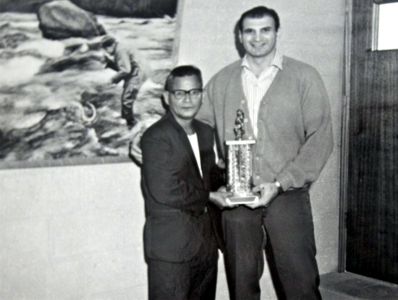
(G) Give me an example.
(Ozman) I’ll give you an example. I block and punch with the same hand a lot. Not only do I block, but I grab and punch with the same hand. There are a number of various combinations that I’ve developed with one hand, and there is good reason for that. First of all, you have to be fast to grab a punch, pull it down and strike with the same hand.
(G) What do you call this new style?
(Ozman) It’s called Mushin-Gi-Tai. Mushin means, “No Mind.” Gi means, “Technique” and Tai means, “The whole body or the whole facility.” Whatever part of the body you are using for defense is also used for offense. The “no mind” idea is a big part of it. This has to do with response. In Mushi-Gi-Tai you respond off of your opponent a lot. By responding I mean in a very natural, high-speed manner. It’s more of a mushin effect than meets the eye, because mushin is “no mind” or responding to the physical action of the other person without thinking. Your counter is generally a kick, or a hit or a thrust, of some sort. Either it’s an elbow or a palm heel, a fist or spear-hand or knife-hand movements. All the strikes use those parts of the body where “chi” is naturally focused, like the palm of the hand, or edge of the hand, fingertips. We combine knowledge of the pressure-point areas of the body with speed and striking accuracy. You practice this when you get advanced. You don’t get this in the beginning of training. When you get advanced, you practice the pressure point areas more so that all of your response is pinpointed there. A lot of teachers may be teaching pressure points, but they are teaching it like a one armed thing. You stand there and the other guy demonstrates how he can knock you out with a particular movement. Many people can do this, but not while they are fighting. We do patterns in circular motions, so that the circles always end up in another vital, pressure point area. We practice just doing a lot of circles. That’s how we start.
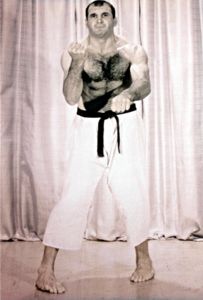 (G) That sounds very interesting to me. Since my accident, I have been concentrating on the healing aspects of martial arts, especially as it relates to pressure points and how chi is naturally directed outward through various points, such as the fingertips. And, rather than go on and on about me, I just want to let you know that I’m totally tuned into what you’re saying.
(G) That sounds very interesting to me. Since my accident, I have been concentrating on the healing aspects of martial arts, especially as it relates to pressure points and how chi is naturally directed outward through various points, such as the fingertips. And, rather than go on and on about me, I just want to let you know that I’m totally tuned into what you’re saying.
(Ozman) Well, good! Good! Yes, the Mushin, or no mind part has had such a reaction over the last twenty-two years that I’ve been doing this. We usually practice on dummies, but once in a while, when we workout with one another and your opponent starts going kind of hard and heavy, I’ve knocked people out and didn’t even mean to do it. It’s just that the habit of the movements, hitting pressure point areas, is very effective. When you practice with another person, you have to slow it down or you’ll get injuries. You can’t hit pressure points, even lightly, too many times. The repetition of hitting a pressure point can knock you out or make you sick. I’ve had guys get sick when they were first starting. They were hitting one another’s arms. They were hitting them very hard and hitting Stomach Five, which is right in the area of the fold of the arm, on the inside. They were trying to get an effect from it, and they didn’t think they were getting enough of an effect from it, so they hit a little too hard, too often. They got sick that night when they went home. They said they felt like they had gotten the flu. I told them they were hitting too hard and they were hitting too frequently in the same spot. You can’t do that when you’re working pressure points. You work on one side of the body, if you’re making any impact at all. If you go immediately to the opposite side, you cause a lot more damage. You may not even know you’re doing it. We had problems with that in the beginning. That’s the problem with teaching young people. They don’t understand. They just want to rush in and make an affect. So, I take a lot of precautions when I do it, because I have to be responsible to the person that I hit, and so does everybody else. All my students have to learn to bring somebody back, if they go out. Guys will learn the pressure points a lot of times, and start whacking at them, but if you’re doing Mushin, you’re doing the movements almost automatically without mind. You’ve done it so many times, those movements and those particular circles that it becomes automatic. That’s without thinking.
(G) Is there any other way to practice?
(Ozman) I practice on a dummy and just beat the shit out of it. I can hit it as hard as I want, and I can hit it repeatedly on pressure points and the dummy doesn’t know. I use that dummy they call Bob out at Roger Lacombe’s place, in Westlake Village, for the past five years. I’ve been going over there to workout and meeting with some of my guys on Sunday when nobody was around. I also like to meet with the guys in the park and practice.
(G) Like most of us did in the old days
(Ozman) Right. Well, many of the guys I consider part of my group are just good competitors. They do train and have trained with others, such as Benny Urquidez, and they are winning matches and tournaments with the help of these other teachers, of course. Did you know Ed Anders?
(G) Doesn’t ring a bell, but he probably doesn’t know me either.
(Ozman) Ed had won one of Demura’s tournaments. Ken Firestone won one of Demura’s tournaments and another young guy, in the junior division. Demura has quite a good Okinawa/Japanese organization going. He was originally Okinawan in style, even though he studied in Japan. A lot of the Japanese styles came from Okinawa.
There’s a thing that goes on in Okinawa called Kakedamashi. Are you familiar with that word?
(G) No, you’re still, always teaching me something.
(Ozman) The technical translation for it is “The Spirit of Entangling Hands.” That’s basically the kind of thing we’re doing. Only, I designed it for particular pressure points. I noticed also that a lot of the Okinawans did too. I noticed a lot of Okinawans from my system, Isshin-ryu, did it. But, it was more QT to the Americans. The more I study, and the more I studied Isshin-ryu I realized that our kata is actually movements for learning pressure points. You can relate almost all of it to pressure points. It takes a little understanding and a little searching, unless there is somebody who is good enough to show you and tell you, but they don’t usually. I originally studied from a marine who had come back from studying with Shimabuku. I studied under Shimabuku later, but they don’t tell you. They don’t give it to you. Did you ever notice the circle step that we do in Isshin-Ryu?
(G) I teach it all the time.
(Ozman) In that circle step, the original reason for it I used to say was that it was a blocking motion. It was like a block to a kick. That’s how I would sign people up [get them interested in lessons]. I would show them how that would work and block a kick with my circle step. Later, I discovered what that movement really was. It was a kick unto itself. It was a knee kick either to the inside or outside of the thigh. If you kick the inside of the thigh, midway between the knee and the hip, that’s spleen eleven. It will take you right down. If you do it on the outside of the thigh–same circle step only using it as a knee strike it goes into the gall bladder. That’s gall bladder thirty-one. So, either to the inside or the outside, it’s pretty crucial. That circle step is what they used for attacking the lower part of the body, the legs. They used that circle step, which wasn’t really a step. How do I know? I had one of the guys from Okinawa, Shimabuku’s son-in-law, come out to visit and work with us a little bit. None of the guys liked his movement. They thought it was ridiculous. They said, “He brings those knees all the way up. That’s not the way to do that circle step.” They weren’t showing it to us, but he was practicing it! I don’t think he had been training any longer than I had, probably less, but he was bringing his knees real high when he stepped. He was practicing the movement right up to the knee kick and we thought he looked like an idiot! Honest to God, that’s the way we thought. It has been all these things, over the years that have leaked through from practicing kata and everything to where I understood a lot more about what was going on. The more I understood about pressure points, the more sense the movements made. So, we’ve been practicing the pressure point movements that are in the katas. You don’t know if that’s the ONLY thing that movement represents, but you can sure pick out sequences, especially sequences where you attack one side of the body and then the other. Or, you [can] attack one area of the body and then attack the same area twice, because two or three movements to the same area can be very devastating. This is especially true around the neck. Even one movement to the neck is very dangerous. That’s why the neck was always out-ruled in tournaments, because of the pressure points around the neck. I have a guy who is 6’4″ who is a Tang Soo Do guy. I used to teach his black belts over there at Lacombe’s. We were working out together and I automatically punched toward his lower jaw on his right side with my left hook. He was just lost. I knew that I had affected one of his pressure points. I thought I had hit him in the jaw with my knuckles. I do very light-handed when I fight. I don’t clench my fists like they used to teach you. That’s bullshit. In the first place, you can’t grab if your hands are tight and you can’t grab after you punch, because your fist is already well-made for punching and not open-hand stuff. But anyway, I had to analyze where he got hit. He showed me where it hurt. I had to massage him to bring him back. He was gone. He had started getting active with me, started getting pretty feisty. So, I was getting feisty too. Whatever it was, it just slipped out and caused great pain. I determined that it had to hit him right on stomach nine and ten, which is right on the neck. I don’t always fight with my fingers tight, like we were told. I went through all that, you know, but that’s not where it’s at. I said, “I thought my knuckles hit the bone on the side of your jaw.” I didn’t hit him that hard. I really pulled it, but the smaller knuckles on my hand sprang under his jaw and hit him on these pressure points, in the neck toward the front. There are two points right there on the front of the neck. These are big knock-out points, stomach nine and ten. I thought I had pulled it, and pulling the punch is another thing you have to learn when you study with me. Pulling the punch has a lot to do with affecting the pressure point areas. We started out believing that pulling the punches is good, because we thought that was NOT hitting our opponent, but it’s totally the opposite. You can do more damage, if you’re hitting a pressure point by pulling back.
(G) Well, it sounds like slamming on the breaks in a car. Even if you’re only going five miles an hour and you apply the pressure slowly then nothing happens. But, if you slam on the breaks, even at five miles an hour, then it’s like pulling the punch, basically. It’s that snap-back.
(Ozman)Yeah, that’s a good analogy. One of the great masters of Okinawa Motabuchoki, he says “Most martial arts people punch 80 miles an hour and pull it back 70 miles an hour. I don’t do that. I punch 90 miles an hour and pull it back 100 miles an hour.” That tells you right there [where he is getting his power]. When you start studying these pressure points you understand that it’s almost like you are making a vacuum on the person’s body, by pulling back and the chi continues going. By pulling back, you’re allowing the chi to go in.
(G) I notice that you are now using the work chi instead of ki.
(Ozman) I don’t use the word ki anymore, because people understand the word chi more, and I’ve gotten into the habit of saying that. Ki is Japanese or Okinawan and chi is Chinese.
(G) Well, all Okinawan styles are really beholden to both the Japanese and Chinese styles.
(Ozman) Yes, because there was a lot of trade going on in the southern part of Okinawa that was close to the area in China called, if I’m not mistaken Fushau. There was a lot of trade, a lot of fishing going back and forth so Okinawa got a lot of Chinese influence. Some of those forms that are originally Okinawan started out in the essence of a Chinese system. I’ll tell you what some of them are. You know, the heavy breathing and the Crane Stance and techniques are all from the crane when it would stand on one leg to sleep, it gives this heavy breathing sound, a deep exhale. That’s where the system of Goju Ryu got its foundation and its start.
(G) I think the katas Sanshin and Tensho, with the hard and the softer breathing show what you’re talking about.
(Ozman) And there is a kata that is something like that in Shotokan, isn’t there?
(G) There are a lot of similarities and cross over, I believe. I studied Goju mostly over the years and it’s based upon the proverb, “The universe breathes both hard and soft.” Everything comes down to the basics, subtle differences and the combination of two extremes.
(Ozman) Yin and Yang, but it’s never even or equally on one extreme or the other. It may go a long ways on one side and partially on the other, but they are both always there.
(G) And, as you point out there is always more than one way to look at the same thing. These pressure points can be used to cause injury, but absolutely you should know the other side of it.
(Ozman) That’s where doctors and acupuncturists are coming from.
(G) And, the interesting thing to me is that they meet in the middle, at these same pressure points.
(Ozman) Balance is the key. In fighting there are a lot of movements in karate that have to do with stopping the flow of chi to one part of the body, so that it can be reserved for another, like cross handed blocks, tucking one knee in behind the other knee like we do in Isshin-ryu katas. These movements are actually blocking the chi from flowing. It’s like crossing two wires, one positive and one negative when you do that. That [tuck] stops the chi from going to the lower part of the body. A lot of systems don’t use those techniques and they have no idea what they’re doing. We didn’t either for quite a few years until I started investigating and studying a lot more. I found out that putting one knee in behind the other knee blocks the chi from flowing out and reserves it for the upper body, for the hand movements. You do the same thing when you do the cross blocks. I’ve made some pretty devastating movements off of those cross blocks. However–and they were pressure point movements I might add when you study you find out that crossing the arms in the upper body gives more power to the legs. It adds power to your kicking, or if somebody is attacking you in the lower part of the body, your chi is down there. The reverse happens when you cross your legs. Most of our movements in Isshin ryu, when we step and twist and tuck one knee behind the other, when I put a punch in there I’m getting more power in that punch from the ki going through my body and being blocked at the lower end. The ki, or chi frequently is, mostly, going out through the feet or the hands. In other words, the lung area starts, we’ll say right under the collarbone–there’s two points there, lung one and two it increases to lung eleven when it gets to the outer part of your thumbnail. When you block a particular area, a leg or a foot, a place on the arm, you are stopping the chi of your opponent from flowing. You’re causing a short, if you’re doing it right. There’s a lot about martial arts that is not understood at all. I’ve never stopped studying and learning. That’s just how I am. We have a good basis for it with Isshin-ryu, that knee tuck and twist that I was talking about is used both for blocking and punching to defend and to attack.
(G) This is something that I hadn’t really ever thought of before, but it makes total sense.
(Ozman) You won’t find this written and [Old School Okinawans] won’t give it to you. I don’t know of any books or anyplace that has this stuff in it.
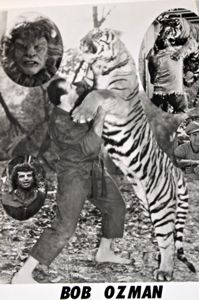 (G) I want to change the subject. You did have a certain amount of success in the movie industry. You were a stuntman and did a little acting. You are also one of those people who is a free-thinker and I think it would be great if you could find the time to do a short video clip for me, a Message in the Bottle as I call them. In this you will distill down what you’ve found is your most important lesson, the thing that you’ve learned, the thing that you want to share. If this short message in a bottle was the only thing that would ever be salvaged from you , what would you say? What is the most important thing that you’ve learned or the thing that you’d most like to share?
(G) I want to change the subject. You did have a certain amount of success in the movie industry. You were a stuntman and did a little acting. You are also one of those people who is a free-thinker and I think it would be great if you could find the time to do a short video clip for me, a Message in the Bottle as I call them. In this you will distill down what you’ve found is your most important lesson, the thing that you’ve learned, the thing that you want to share. If this short message in a bottle was the only thing that would ever be salvaged from you , what would you say? What is the most important thing that you’ve learned or the thing that you’d most like to share?
(Ozman) The most important in time is the way you think, and the way you think about movements. It has to be a thought before it is ever going to be a physical reality. This is true, even if you’ve never done the movement before. I can go sit on the beach in a nice, comfortable chair and I can think about kata, or movements. When I figure out a movement that I want to try or a movement that I can do, I can think about them enough until I can almost make them happen automatically. What I’ve done with my mind is the same as any person does with their physical in order to create that in their mind. Let’s just say that I think about a kick-punch, kick-punch, kick-punch and I visualize the opponent, and I think about what I’m doing and how I’m doing it, what expression I might have.
(G) How it’s going to feel on the inside?
(Ozman) And, maybe what my opponent’s thinking by the expressions on his face. If I do that by just sitting around, or laying in bed, I find that I can move myself along much further in a particular technique by the thought. Without the thought, in the right way, it is not the same. s what you do when you practice the physical movement. At the same time you are practicing the subconscious mind, over and over and over again. s too bad that it takes that much exercise and a lesser amount of thought, when the thought should be greater. If anything there should be more thought and much less the amount of the physical. I can get the same result, from the same technique by thinking first. Sure, the physical repetition gives your mind a way to think a little differently about the movement and know that it is possible, but s how I got my speed. I got my speed up with my thoughts, by the way I think. Not by anything else. Not by doing it. I ask my How many times have you done that movement or that kata? How many times have you thought about each one of those movements in that form, what it could be? Or, what re doing with it? Usually the answer is minimum, when you boil it all down, ve thought about it the minimum amount.
(G) So when you talk about the combination of mind, body and spirit they are all important to you?
(Ozman) Absolutely! But, when I was newer at the art I didn’t or not enough. I did it some. I would imagine and think about the movements, but it was nothing like what I do today. My concentration is far superior. I can almost create a movement that I’ve never done before, early in the morning which is my best thinking time get out of bed, go through my day and that evening go work out and apply it, first time. Because a lot of success has to do with the way you think. So, that would be my answer to what you are asking.
(G) By the way, I have to point out that in my Five Principles of Everything, the first and foremost principle is that of Applied Awareness, which says exactly what you are talking about: The way you think about anything, determines the outcome. I’ll send you a copy of the manuscript in progress and invite you to contribute. After all, your name should be in this book and I want to thank you very much for this interview.
(Ozman) Thank you, and I really want to have more of these conversations with you. I really enjoy it.

